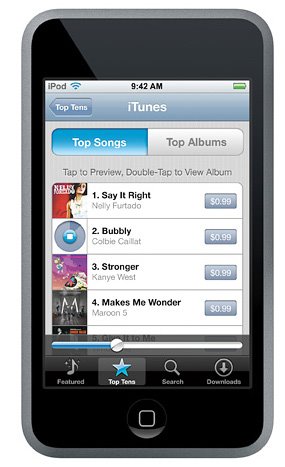Up-to-date news on the A(H1N1) Swine flu virus
They are similar. Swine flu is more likely to include diarrhea and vomiting, as well as the respiratory symptoms that come with typical seasonal human flu. Recent reports indicate that the A(H1N1) swine flu virus infects deeper into the lungs than typical seasonal human flu. Symptoms for swine flu include:
- Chills
- Cough
- Fatigue
- Diarrhea
- Fever (greater than 100°F or 37.8°C)
- Headache and body aches
- Sore throat
- Stuffy nose
2. How would I know I had swine flu if I had some symptoms?
You wouldn't, neither would your doctor. A respiratory specimen would have to be taken within the first four to five days. The specimen would be sent to a lab, which in the USA would be a CDC lab.
Authorities and experts still do not know why symptoms were initially worse in Mexico than in the USA, Canada and other countries. However, recently reports worldwide are coming in of more severe symptoms.
The important point is to call your doctor if you think you have the flu. Prescription anti-viral drugs such as TamiFlu or Relenza can be called in by your doctor. Unless you are:
- exceptionally ill with flu-like symptoms
- chronically ill
- immune-suppressed
- quite elderly
- or have a very young child, under age 2
It is best not to report to a hospital, as you could risk spreading the disease. Call your doctor and do what he tells you.
3. How long are infected people contagious?
An adult is usually contagious as long as they have symptoms - usually up to seven days following the beginning of the illness. The "shedding stage" of the virus is during the first 4-5 days of illness. Children can be considered contagious longer, up to 10 days. The initial incubation period is 24-48 hours.
4. What medications are there?
There is Tamiflu or Relenza - both have shown to be effective against these recently reported strains of swine flu. There are four anti-viral drugs altogether that are commonly used to treat various strains of flu.
5. Do these medicines prevent me from catching swine flu?
That is not currently advised. Preventative medication might be advisable for very special circumstances where a person had to expose themselves to potentially ill people during an epidemic (which we do not yet have here). Such people might include ER workers. An outbreak in a nursing home, for instance, might lead to protecting all the other residents with a drug like TamiFlu.
As the coverage time is limited, the preventative use of anti-viral medications is not advised for the general public.
Do not confuse OTC (over-the-counter) cold and flu preparations for anti-flu medications that you can only get with a prescription.
6. Do children and adults have the same symptoms?
Symptoms are similar. However, the signs of potentially life-threatening complications are not. Several countries are now reporting that younger adults and children are more likely to have more severe symptoms and complications. The CDC advises those with these symptoms to seek emergency care immediately:
- Being extremely irritable
- Bluish skin color
- Rapid breathing or trouble breathing
- Fever with a skin rash
- Not drinking enough liquids
- Not waking up or interacting
Emergency warning signs in adults are:
- Confusion
- Difficulty breathing or shortness of breath
- Pain or pressure in the chest or abdomen
- Severe or persistent vomiting
- Sudden dizziness
7. Are there any swine flu vaccines?
Not currently, but we are on the verge of getting some out. Authorities, such as the CDC in the USA are considering adding the current swine flu strain to next year's vaccine. The UK has ordered 60 million vaccines and expects to receive many of them later this year.
8. If I took the swine flu vaccine in the swine flu scare during the 70s, would that protect me now? Will this year's flu shot offer me any additional protection?
Nobody knows whether protection may be full, partial, or not at all. The current swine flu strain also has avian flu components. The avian flu component is not from the deadly bird flu strain.
9. Can I catch it from pigs?
No, you can only catch this strain from other humans. It is a mutated pig virus.
10. Can I catch it from eating pork meat and pork products?
No. Swine flu is not transmitted by the food you consume - it is not a foodborne illness. All pork food products are safe to consume - as long as they are prepared properly. The virus dies at 160 degrees Fahrenheit.
Swine flu is transmitted in the same way normal flu is - through airborne droplets form a sick person's cough or sneeze
11. How does it cross from a pig to a human?
The swine virus mutates so that it can infect humans and be spread by humans.
12. Can it kill me?
Initially, in April 2009 when the outbreak started, symptoms appeared to be milder outside Mexico. However, this is not the case anymore. Several countries are reporting more cases of severe symptoms. The numbers are of concern, but not alarming. Health authorities throughout northern countries are expressing concern at what may happen during the coming winter when the number of flu cases rise.
13. Why the big concern if the regular flu kills 35,000 people a year, which is why we are all encouraged to get a flu shot?
This is a new flu strain that our bodies have not been exposed to before. The flu strains that the CDC creates a vaccine for each year all have the potential to cause great harm, especially in elderly, pediatric and chronically ill patients. This particular flu strain has struck seemingly healthy, young adults, with some resulting in death in a growing number of countries. It also appears to be quite contagious. We will know more about this strain in the coming months.
14. How is it different from avian (bird) flu?
Avian flu so far has had difficulty infecting humans unless they are exposed intensely to birds, because the virus has not mutated in a way that makes it transmissible by humans to other humans. This virus has origins genetically from both pigs and birds, and the big difference from the avian flu is that this swine virus can be transmitted readily from human to human.
15. Is this just another scare that will go away like bird flu?
Initially we were not sure whether this the A(H1N1) swine flu virus would become a global pandemic. The WHO (World Health Organization) declared it a pandemic in June 2009. The number of infected people worldwide is growing fast. It is still not clear how many deaths it may cause during the coming winter months, when flu epidemics typically occur. It is clearly not fizzling out.
16. Should I cancel my vacation to Mexico?
As people are now becoming infected in large numbers throughout the world, and infections are taking place mainly between people in their own country, cancelling any vacation to any country because of this virus is pointless.
17. What if I'm on a plane? Should I wear a mask?
Not necessary. The air on a plane is filtered. Transmission might occur if someone sitting close to you coughs or sneezes on you. The newer designs of aircraft airflow keep the air in a top-down flow, not forced air from front to back. However, if you do have a respiratory illness, it might be best not to travel.
18. How long does the germ live on surfaces, like on my desk if someone sneezes in my office?
Influenza virus survives only minutes on inanimate objects or hands, so these are very inefficient ways to spread the illness. Influenza is most easily spread by droplets that come into contact with our mucus membranes such as when someone coughs or sneezes in our faces. If we shake hands with an infected person who has just wiped their nose and then we rather quickly rub our nose or eyes with our own hand, then we could get the flu. So, good hand washing does play a role in diminishing the spread of the disease.
19. Other than hand washing and covering my mouth if I sneeze or cough, what can I do to take care of myself and others?
If you are ill, stay home. Control your sneezes and coughs. If you cough into your hand, remember the virus could be live on your hand at least for a few minutes, so wash your hands before touching anyone else. If you get symptoms suggesting the flu, call your doctor, who can call in a prescription for medication to treat the flu. Resist going to the doctor's office or a hospital ER for influenza symptoms unless you are seriously ill. You do not want to spread the disease to others.
20. What else can I do?
Keep in touch with the most recent CDC messages through the following links:
Go to the sources of verifiable information such as WHO (World Health Organization) or the CDC.
Most important, be alert, not panicked.
"There is a huge difference between preparedness and paranoia", says Dr. Robert Emery, occupational health expert at the UT School of Public Health at Houston. "Although we're dealing with a new strain of flu, a set of universally applicable preventive measures exist that can be employed right away by everyone to help stop the spread of this disease"
Proper hand hygiene:
There's a right way and useless way to wash hands and wash away micro-organisms. The object is to break down the protective membranes of germs, dislodge them from your hands and let them go down the drain. Plain soap in the right hands is strong stuff.
- Lather well with a bar of soap or squirt a coin size of liquid soap in the palm of your hand.
- Vigorously rub your hands together, soap up between your fingers, AND your wrists, front and back for 15 seconds. Sing the first chorus of any song you know and that'll take you through the 15 seconds.
- Rinse under warm, RUNNING water. Remember, the object is to dislodge germs. The force of water is key.
- Thoroughly dry your hands with a disposable towel or under the blower, again, rubbing your hands together.
- Discard the towel.
If you're using alcohol-based gels as hand cleansers:
Put a dime-sized amount in one hand:
- Vigorously rub your hands together and in between your fingers until the GEL IS DRY about 30 seconds.
- DO NOT touch your face!
Once your hands are clean, do not touch your face, nose, eyes or lips.
Rubbing your eyes and nose provides a freeway for micro-organisms and good breeding ground once they've arrived.
Cover your cough
If you must cough or sneeze, cover your mouth with a tissue, or the inside of your elbow (not your hand as you may then contaminate surfaces when you touch them). Throw the tissue away in a waste basket. Do not leave discarded tissues on your desk or other surfaces.
Then, wash you hands thoroughly.
The throw-it-away part is essential.
Micro-organisms live a life span from a few seconds to days on inanimate surfaces such as desks, table tops, faucets…tissues. If your tissues are scattered on your coffee table, they then are in contact with community surfaces. Both the tissues and the surface it sits on can spread germs to the person who touches the coffee table.
If you begin to feel ill: feverish, achy, have a dry, painful cough, sore throat, go home from school or work and call your health care provider for further instructions.
If you feel sick with flu-like symptoms and you care for the very young or the very elderly or the chronically ill, inform your health care provider when you call their office.






